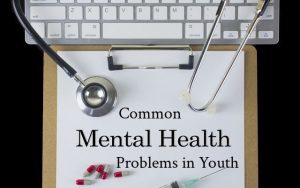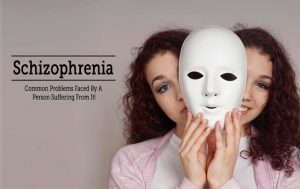
Mental sickness is one of the serious health concerns in India. Though there is no such classification of age for mental patients but if will consider the latest reports then it has been found that youth are more prone to mental health diseases. Our team has conducted a latest research on the mental health problems in India, and we have come with this list with you. We would be listing five most common mental health problems in Indian youth. The research data will help everyone in analyzing the situation, and if you find that someone near to you is suffering from the same then it is better to consult a psychiatrist at the earliest. Let us take a round about the most common health diseases in India.
Obsessive-CompulsiveDisorder (OCD):

It is a common, chronic and long-lasting disorder in which a person has uncontrollable, reoccurring thoughts (obsessions) and behaviors (compulsions) that he or she feels the urge to repeat over and over. It’s a neurochemical disturbance in brain and worsens due to stressful environment. It’s treated with medication, psychotherapy or a combination of the two. An obsessive person is often guilt-ridden for having irrational thoughts and his or her inability to control them or associated compulsive behavior.
This leads to them justifying their obsessions and compulsions and therefore they are unable to seek help. Treatment duration depends upon the intensity and frequency of episodes and may be needed throughout life. The examples include a fear of contamination, experiencing unwanted sexual thoughts which are undesirable and invoke feelings of guilt and shame, religious obsessions, having excessive concerns about physical health (of self or others), compulsions are repetitive behaviors or thoughts that a person engages in to neutralize, counteract, or make their obsessions go away, like washing and cleaning in excess without satisfaction, repeatedly checking, repetitive actions, arranging or setting things in efforts to eradicate the discomfort of seeing things disordered. These obsessions and/or compulsions typically take a reasonable amount of time (more than an hour a day).
Depression:

It is one of the top causes of mortality in the world today, but people still fail to recognize it. This is different from sadness. Depressive disorders can occur at any age, gender and in any socio-economic strata. A depressive episode is characterized by a two-week period marked by a depressed mood and loss of interest or pleasure in activities, which leads to a significant interference in the person’s social and occupational functioning.
These symptoms might be accompanied by a significant weight loss or decrease or increase in appetite, along with sleep disturbances, low energy levels and fatigue. Such a depressed individual might experience feelings of worthlessness or excessive or inappropriate guilt, with a difficulty in concentration, difficulty in decision making, and recurrent thoughts of death. However different doctors have different view point for the same and many have come up with the conclusion that, its cause varies from person to person, but is mainly due to deficiency of serotonin in brain.
Bipolar Disorder:

It is also called as Bipolar Affective Disorder, in which the mood disorders can be viewed on a continuum, has one pole comprising of low moods, sadness and low levels of energy (depressive phase), as opposed to the other extreme pole comprising of excitability, euphoric or excessively cheerful moods, and high levels of energy (manic phase). The bipolar disorders are characterized by fluctuating moods, between both these opposing poles. In addition to the depressive episode, a manic episode is characterized by a distinct period of abnormally elevated, expansive or irritable mood, which persists over a period of time, along with an increase in the person’s energy levels and goal-directed activity, which lead to marked interference in the social and occupational functioning. These symptoms would persist for at least one week, during which period they need to be present for the most part of the day.
The episode is also characterized by an increased self-esteem or grandiosity, with a decreased need for sleep, which could mean that the person would feel rested after a few hours of sleep. Another typical tendency of individuals in a manic phase includes an excessive involvement of the person in activities that have a high potential for painful consequences, for example, engaging in unrestrained buying sprees, sexual indiscretions, or impulsive business investments, which is quite common among children, but is more often ignored than not. Characterized by excessive activity, or difficulty in controlling behavior which is not appropriate for a person’s age, there symptoms begin by the age of six to 12, and cause problems in at least two settings (such as school, home, or recreational activities. In children, problems paying attention may result in poor school performance. Although it causes impairment, particularly in modern society, many children with ADHD have a good attention span for tasks they find interesting.
Anxiety:

It is another disorder that’s climbing the charts in the country. Indian hospitals have experienced patients with palpitation, restlessness, apprehension, trembling, flushing, dizziness, nausea breathlessness and vomiting due to a stressful event. These are nothing but anxiety. The problem is when anxiety response becomes a disorder especially after these symptoms occur frequently. Generally, people presume that the symptoms are due to a cardiac problem or a respiratory issue, and hence they visit a psychiatrist only when it’s too late. There is even the likelihood of them getting addicted to substances like alcohol, tobacco, drugs or sleeping pills as these substances give temporary relief.
This disorder goes hand in hand with depression and serotonin deficiency. Anxiety is a physiological process, which can be triggered in a situation which is perceived as being potentially dangerous, and the brain sends a message to the autonomic nervous system, thereby activating a fight or flight response. It could be manifested in the form of psychological symptoms as well, like difficulty in attention and concentration, forgetfulness, feeling a loss of control, etc, and behavioral symptoms like disturbed sleep, restlessness, fatigue as well as avoiding confrontation or high pressure situation.
Schizophrenia:

Schizophrenia and the psychotic spectrum of disorders is characterized by the presence of hallucinations, delusions, disorganized thinking (which is manifested in the individual’s speech), grossly disorganized or abnormal motor behavior, and other negative symptoms like a lack of motivation or reduced emotional expressions. Hallucinations are the person’s sensations which are very vivid, but without the actual presence of a stimulus. A delusion is an individual’s false belief, which is firmly held and persists despite the presence of any contradictory evidence. Such delusions could believe that others are conspiring or plotting against the individual, a belief that external events or phenomena are being targeted at the individual, or believing that the person is a superior power, etc.
It is very hot and sensational issue that mental diseases are high in India. One is really supposed to take care of the things very minutely. Though mental diseases are common but in the meantime it is very difficult to find trusted doctors for the same. Dr. Shashi Bhushan is India’s trusted psychiatrist located in Delhi. He is expert in handling different types of mental diseases.
